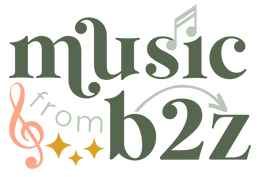Hey, y’all! I’m so glad to have you back for Part 4 of our Small Group Instruction in the Music Classroom series! Today’s post will probably be the shortest of the series, but it is one of my favorites! Last time, we talked about how the terms “stations” or “small group” can mean many different things.
“Free Choice” Stations
One of my favorite ways to do “stations” in the music classroom is to do what I call Free Choice Stations. Ok, I know what you’re thinking...that sounds like chaos. I promise, it’s not! Since my kiddos know my Small Group Expectations, they can handle a more relaxed setting.
I love Free Choice Stations for MANY reasons. The number one reason is because my students absolutely love them! Basically, I choose 5-6 activities or stations that we have done in the past. (Examples: note-matching coloring sheet, instrument family game, any popular smart board game, pitch matching games, rhythm flashcards, etc.) I spread them around my tables and flexible seating options and let the kids work.

They do not have a minimum of activities they have to complete, so if they choose, they can stay at one activity the entire time! I love that my students have a choice in what they get to do. I also learn alot about the kids as they work.
Some always go for the smart board game, while others choose the note-matching coloring sheet. (P.S. ALWAYS include a coloring sheet. My kiddos revolt if that isn’t an option on free choice day!)
Review & Concept Mastery
The best part about Free Choice Stations is that the kids think of it as a “fun day” or “free day,” but really, they are still learning and working on concepts I need them to master. The flexibility these type of activities offer is priceless.
Have you ever been in any of these situations?
Enter: Free Choice Stations
- Oh, no! I’m out sick today and I'm not able to write lesson plans! Free Choice Stations.
- A meeting? Right now?! Free Choice Stations.
- The art teacher had to leave and now I have double classes?! Free Choice Stations
The key to this method of small group work is:
- Specific Expectations so your students can come right into the classroom and start working
- Using activities the students already know how to do. This guarantees that you can use them at any time during the year.
- As much choice as possible so the students are engaged in their learning the entire class period.
A favorite time of the year in my classroom is the last week of school. Since we have so many things going on, I let them choose what stations they want out for the day.
I let every class pick up to 5 things and I pull them out for the day. By that time in the year we have TONS of options to choose from. It's a great way to review many concepts at the end of the year while the kids think they're just playing games!
This type of small group work is one I use on a regular basis. I find that since my students have the most amount of choice, they stay on task and are more efficient when working. I learn so much more about my students just by watching which stations they choose, who they sit with (or don't sit with), and how they work best. It gives me really good insight on their learning habits.
Stay tuned for Part 5 of the series where we’ll be talking about how Small Group Instruction in the Music Classroom can be a game changer for engagement and individual assessment!
Catch Up:
Part 1: Lesson Structure and Setting Expectations
Part 3: Stations Do Not (Have to) Equal Rotations
Next in the Series:
Part 5: Engagement and Individual Assessment

